Guide to Salt
What is Healthy and What to Avoid
Everything you need to know about salt; Why we need salt to survive, why it makes food taste so good, and what is the healthiest salt to consume. We also take a look at some of salts numerous health benefits, including how much salt is good for you and what to look for when buying healthy and mineral-rich salt products.
We have also attached a few links to the types of salt we use in our very own Spanish kitchen.
What is salt?
Salt is a mineral composed of sodium and chlorine, scientifically known as sodium chloride (NaCl). It is essential for life and has been used throughout history for culinary, preservative, and various other purposes.
Today, salt is mostly used as a flavor enhancer found on most dining tables throughout the world, bringing desirable flavors to foods to our tastebuds. It makes rich foods taste richer and enhances subtle flavors of ingredients, bringing food flavors to life!
Salt is also something of a lifeblood for us, and because we humans crave salt and need the sodium found within salt to survive, indeed salt is vital for many bodily functions. Salt is crucial for muscle function, hydration, and balancing fluid levels in our blood and cells. But, did you know that not all salt is created equal?
Salt Processing
Salt is found everywhere throughout the world, however, some varieties of salt are better for us than others, and this is mainly due to the method of processing the salt. Salt processing involves several methods tailored to the source and intended use of the salt. Solar evaporation is used for sea salt, rock salt mining extracts salt from underground deposits, and solution mining dissolves underground salt to create brine that is evaporated.
Each method results in different types of salt with varying characteristics and uses.
- Solar evaporation: From the sea where the salt water is evaporated leaving behind salt crystals
- Rock salt mining: From natural underground salt deposits
- Solution mining: Involves pumping water into underground salt deposits to dissolve the salt, creating a brine that is then evaporated to produce salt.
1. Solar Evaporation
This method is typically used for sea salt production and involves the evaporation of seawater or saltwater from salt lakes.
Process:
- Brine Collection: Seawater or saltwater is directed into shallow ponds.
- Evaporation: The water evaporates naturally under the sun, leaving behind salt crystals. This process can take several months.
- Harvesting: Once enough water has evaporated, the salt crystals are raked and collected.
- Washing and Drying: The harvested salt is washed to remove impurities and then dried.
- Grading and Packaging: The salt is graded based on crystal size and quality before being packaged for sale.
Characteristics:
- Produces various types of sea salt (e.g., Celtic sea salt, Fleur de Sel).
- Contains trace minerals from the seawater.
2. Rock Salt Mining
Rock salt mining involves extracting salt from underground salt deposits.
Process:
- Mining: Large machines or explosives are used to break up the salt deposits in underground mines.
- Crushing and Screening: The extracted salt rocks are crushed into smaller pieces and screened to sort them by size.
- Milling: The crushed salt may be further milled to produce finer grains.
- Purification: The salt is sometimes washed to remove impurities.
- Packaging: The final product is packaged for commercial use.
Characteristics:
- Produces rock salt or halite.
- Commonly used for de-icing roads and in water softening.
3. Solution Mining
Solution mining involves pumping water into underground salt deposits to dissolve the salt, creating a brine that is then evaporated to produce salt.
Process:
- Injection: Water is injected into underground salt deposits, dissolving the salt to form brine.
- Extraction: The brine is pumped back to the surface.
- Evaporation: The brine is heated in evaporators to precipitate the salt.
- Crystallization: The evaporated brine forms salt crystals.
- Centrifuging: The salt crystals are separated from the remaining liquid using centrifuges.
- Drying: The salt is dried to remove remaining moisture.
- Grinding and Additives: The dried salt may be ground to the desired particle size and additives like iodine and anti-caking agents can be mixed in.
- Packaging: The processed salt is packaged for various uses, including table salt and industrial applications.
Characteristics:
- Produces highly pure salt.
- Suitable for food-grade salt and industrial applications.
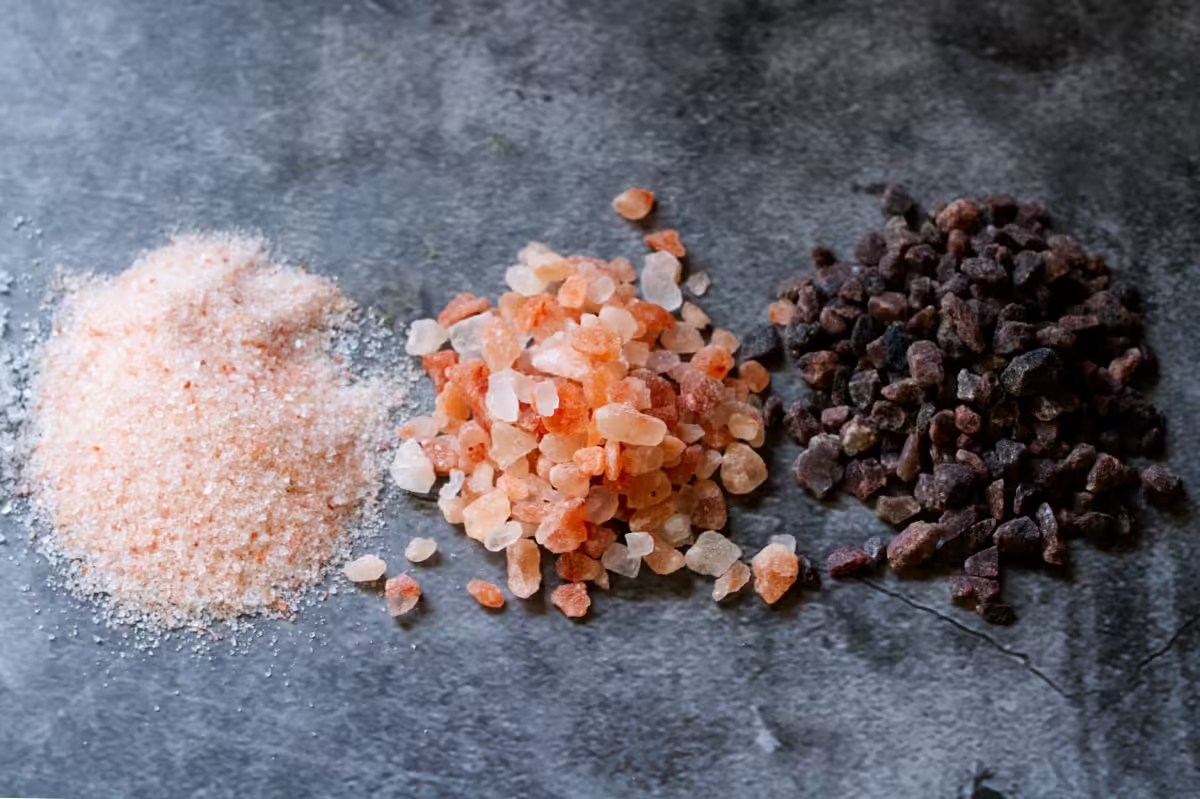
Salt Varieties
Salt comes in a surprising number of varieties, each with unique characteristics and uses. The most popular is table salt, and If you’ve only been using regular table salt all these years, it’s time to branch out and explore other salt varieties in your cooking.
The main varieties include:
- Table salt: This is the most common type of salt, typically mined from underground salt deposits. It is heavily processed to eliminate minerals and can contain additives like iodine and anti-caking agents.
- Sea Salt: Harvested from evaporated seawater, sea salt is less processed than table salt and retains trace minerals, giving it a different flavor and texture. Sea Salt (Coarse Grain) and Sea Salt (Fine Ground) are two good examples of sea salt.
- Kosher Salt Flakes: This coarse-grained salt is favored by chefs for its ease of handling and pinchability. It is usually free of additives and dissolves quickly, making it ideal for cooking.
- Himalayan Pink Salt: Mined from ancient sea beds in the Himalayas and surrounding regions (Pakistan). This salt gets its pink color from trace minerals like iron. It is often used for its purported health benefits and unique taste. Himalayan pink salt is available from most supermarkets and food retailers in coarse grain and in fine grain.
- Celtic Sea Salt: Harvested from the coastal regions of France, this salt is grayish due to its mineral content and is often moist. It is known for its high mineral content and is often used in gourmet cooking. Celtic salt is available as Celtic Salt Extra Fine and Celtic Salt Grey Coarse.
- Fleur de Sel Fine Sea Salt: This delicate sea salt is hand-harvested from the surface of salt ponds in France. It has a delicate flavor and moist texture, making it ideal as a finishing salt.
- Hawaiian Black Lava Sea Salt: A type of rock salt from the Himalayas, black salt has a distinctive sulfurous flavor and is often used in South Asian cuisine.
- Alaea Red Hawaiian Sea Salt: This salt is mixed with red volcanic clay, which gives it a distinctive color and flavor. It is used in traditional Hawaiian dishes.
- Smoked Salt: This salt is smoked over wood fires, giving it a smoky flavor that enhances grilled or roasted foods.
- Flake Salt: Known for its light, flaky texture, this salt is often used as a finishing salt. Examples include Maldon salt, a British salt company.
These are some of the most well-known varieties of salt with a few affiliate links where to buy them. There are many more regional and specialty salts available, each with unique properties influenced by their mineral content, production method, and place of origin.
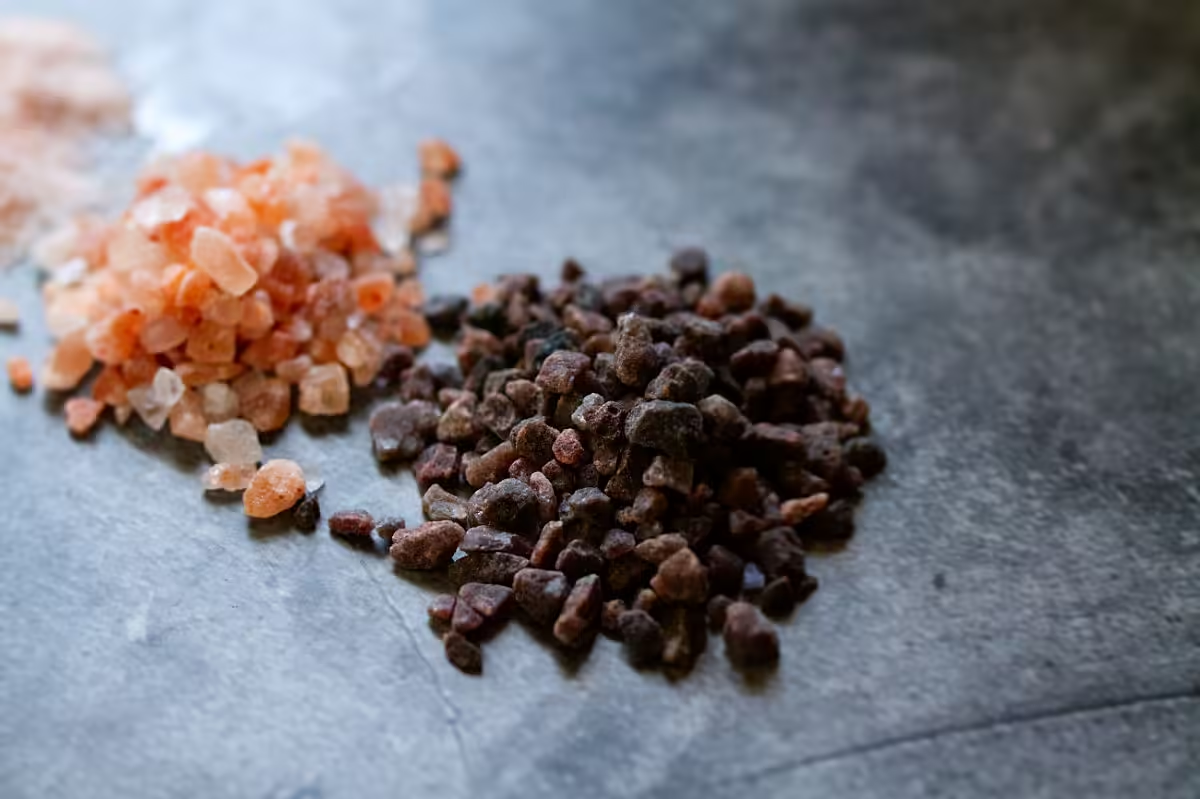
What is the healthiest salt?
The “healthiest” salt largely depends on the context in which it’s being used and individual dietary needs. Himalayan pink salt, Celtic sea salt, and other minimally processed salts with higher mineral content are often considered healthier options.
However, some salts are often touted for their health benefits due to their mineral content and minimal processing:
- Himalayan Pink Salt: This salt is often considered one of the healthiest due to its rich mineral content, which includes trace amounts of calcium, magnesium, potassium, copper, and iron. The minerals give it a pink color and a slightly different flavor profile compared to regular table salt.
- Celtic Sea Salt: Known for its grayish color and high moisture content, Celtic sea salt retains a variety of essential minerals and is less processed than table salt. It contains magnesium, iron, and other trace elements, making it a popular choice for those seeking a more natural salt option.
- Red Hawaiian Salt (Alaea Salt): Infused with red volcanic clay, this salt is rich in iron oxide, which gives it its distinctive color. The clay also provides additional trace minerals.
- Black Salt (Kala Namak): This salt contains a variety of minerals, including sulfur, which gives it a distinctive flavor and is often used in traditional Ayurvedic medicine. It’s believed to aid in digestion and provide other health benefits.
- Sea Salt: General sea salt, harvested from evaporated seawater, retains more minerals compared to heavily processed table salt. It can vary in mineral content depending on its source but is generally seen as a healthier alternative to table salt.
- Kosher Salt: While not particularly high in additional minerals, kosher salt is additive-free and less processed, making it a purer option compared to iodized table salt.
Considerations for Choosing a Healthy Salt
- Mineral Content: Opt for salts with higher mineral content if you want to benefit from trace elements. Himalayan pink salt and Celtic sea salt are good choices.
- Processing: Less processed salts are generally better. Sea salts and rock salts are usually less processed than table salt.
- Additives: Avoid salts with added iodine or anti-caking agents if you prefer a more natural option. Kosher salt and many sea salts are additive-free.
What is the most mineral-rich salt?
The most mineral-rich salt is generally considered to be Himalayan Pink Salt. This salt is prized for its high mineral content, which includes over 80 trace minerals and elements. Some of the key minerals found in Himalayan pink salt include:
- Iron: Gives the salt its distinctive pink color and is important for oxygen transport in the blood.
- Calcium: Essential for bone health and muscle function.
- Magnesium: Important for muscle and nerve function, as well as energy production.
- Potassium: Helps regulate fluid balance and muscle contractions.
- Sodium: Essential for maintaining fluid balance and proper nerve and muscle function.
In addition to these, Himalayan pink salt contains trace amounts of other minerals such as zinc, selenium, copper, and iodine, which contribute to its health benefits and unique flavor.
Other Mineral-Rich Salts
While Himalayan pink salt is often highlighted for its mineral content, other salts also offer significant mineral benefits:
- Celtic Sea Salt: This salt, harvested from the coastal regions of France, is known for its grayish color due to its mineral content. It contains magnesium, iron, and other trace elements, making it another good option for those seeking mineral-rich salt.
- Red Hawaiian Salt (Alaea Salt): This salt is mixed with red volcanic clay, which infuses it with additional minerals, particularly iron oxide, giving it a distinctive red color and health benefits.
- Black Salt (Kala Namak): This salt contains a variety of minerals, including sulfur, which gives it a unique flavor and potential digestive benefits.
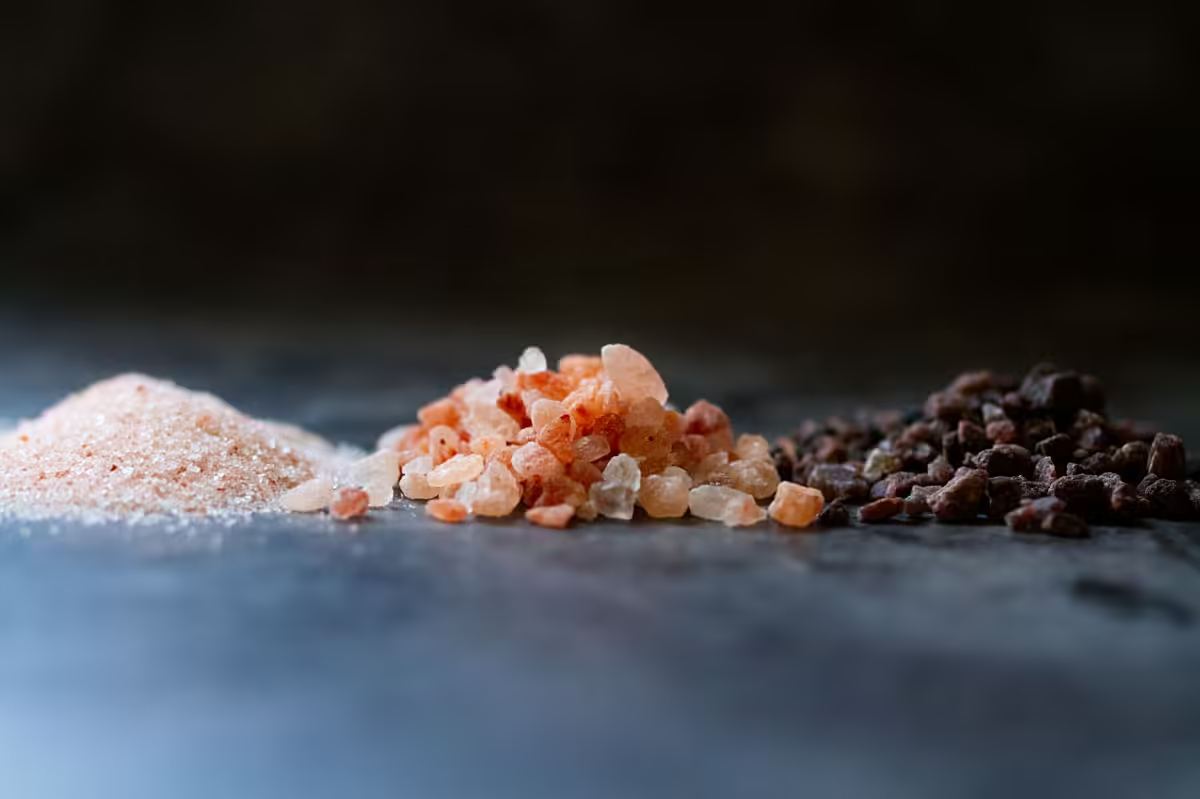
Salt Health Benefits
The key to using salt healthily lies in moderation and balancing it within a well-rounded diet. Salt, in appropriate amounts, offers several health benefits due to its essential role in various bodily functions. Here are some of the key health benefits of salt:
1. Electrolyte Balance
Salt contains sodium, a crucial electrolyte that helps maintain fluid balance in the body. It ensures that cells function properly and is vital for hydration.
2. Nerve Function
Sodium is essential for proper nerve transmission. It helps generate and transmit electrical impulses in nerves, facilitating communication between the brain and various parts of the body.
3. Muscle Function
Salt helps in muscle contraction and relaxation. Adequate sodium levels are necessary to prevent muscle cramps and to ensure smooth muscle function.
4. Hydration
Salt helps the body retain water. This is particularly important during intense physical activity or in hot climates, where excessive sweating can lead to dehydration and loss of electrolytes.
5. Blood Pressure Regulation
While excessive salt intake can lead to high blood pressure, an adequate amount of sodium is necessary to maintain normal blood pressure levels. It helps regulate blood volume and pressure.
6. Nutrient Absorption
Salt enhances the absorption of certain nutrients in the intestines, including glucose and amino acids. This process is crucial for maintaining energy levels and overall health.
7. Acid-Base Balance
Salt helps maintain the body’s acid-base balance, ensuring that the pH levels of blood and bodily fluids remain within a healthy range.
8. Digestive Health
Salt stimulates the production of digestive enzymes and hydrochloric acid in the stomach, aiding in the digestion and breakdown of food.
9. Cellular Function
Sodium plays a role in cellular function and metabolism. It helps transport nutrients into cells and waste products out of cells.
10. Adrenal Function
Adequate salt intake supports adrenal gland function, which is essential for the production of hormones like cortisol and aldosterone. These hormones regulate metabolism, immune response, and blood pressure.
Considerations and Moderation
While salt has these benefits, it’s important to consume it in moderation. Excessive salt intake can lead to health issues such as hypertension, heart disease, and stroke. The key is to find a balance that supports bodily functions without overloading the system.
Choosing the Right Type of Salt
- Mineral-Rich Salts: Salts like Himalayan pink salt, Celtic sea salt, and other minimally processed salts contain trace minerals that can contribute to overall health.
- Additive-Free Salts: Opt for salts without additives like iodine or anti-caking agents if you prefer a more natural option.
Sodium Intake: How much salt can I consume per day?
Regardless of the type of salt, it’s important to monitor overall sodium intake. Excessive sodium consumption can lead to high blood pressure and other health issues. The American Heart Association recommends no more than 2,300 milligrams of sodium per day, with an ideal limit of 1,500 milligrams for most adults.
Conclusion:
Salt is essential for numerous physiological functions, including maintaining electrolyte balance, nerve and muscle function, hydration, and nutrient absorption. When choosing salt for cooking and enhancing food flavor, choose a salt that is mineral-rich and additive-free. Remember, less processed salts are generally better. Sea salts and rock salts are usually less processed than table salt.
By choosing high-quality salts and consuming them in moderation, you can harness these health benefits while avoiding potential risks associated with excessive salt intake.
What is your favorite type of salt for cooking?
Let us know in the comments section below!
1 Comment
Submit a Comment
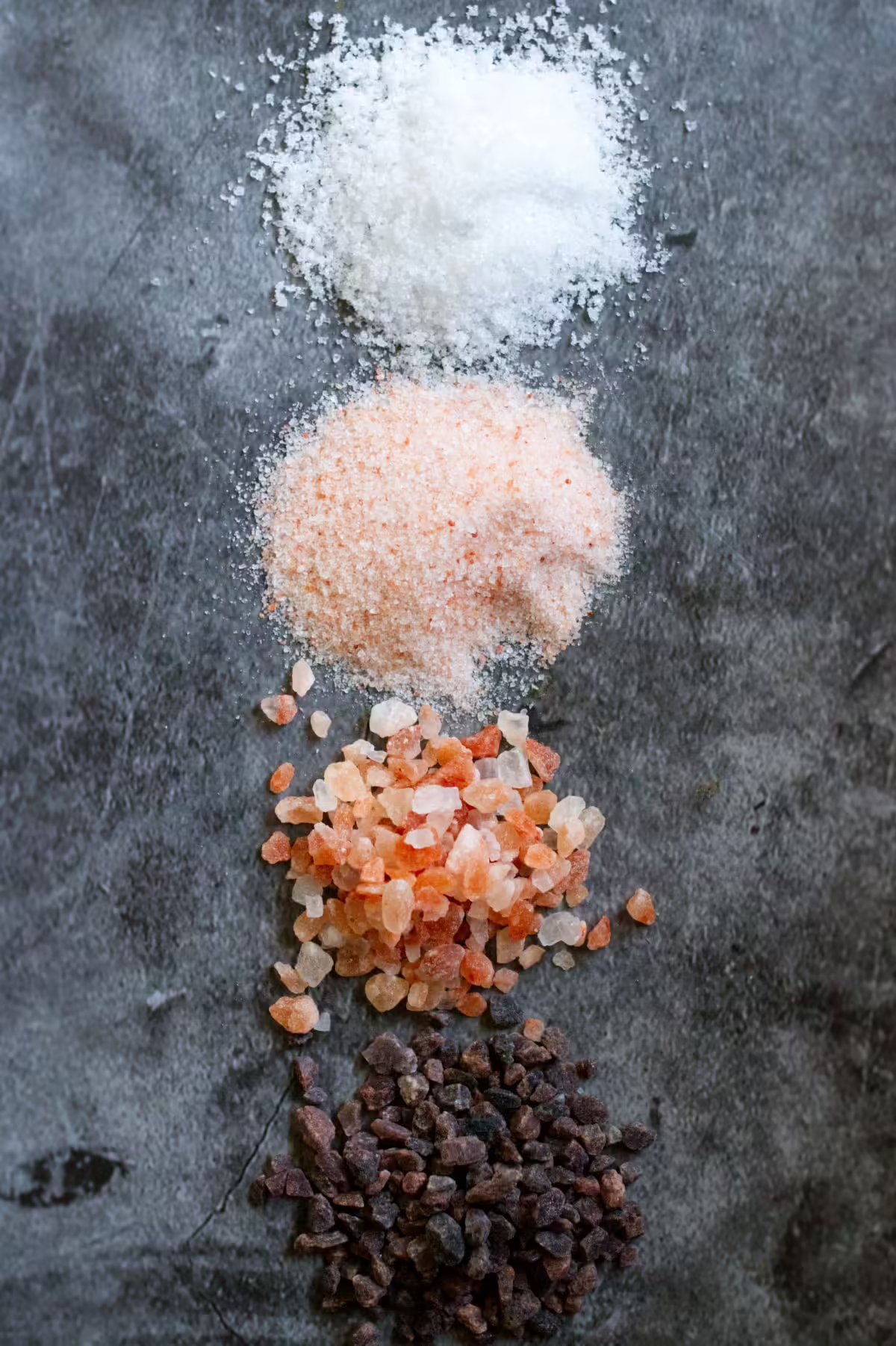

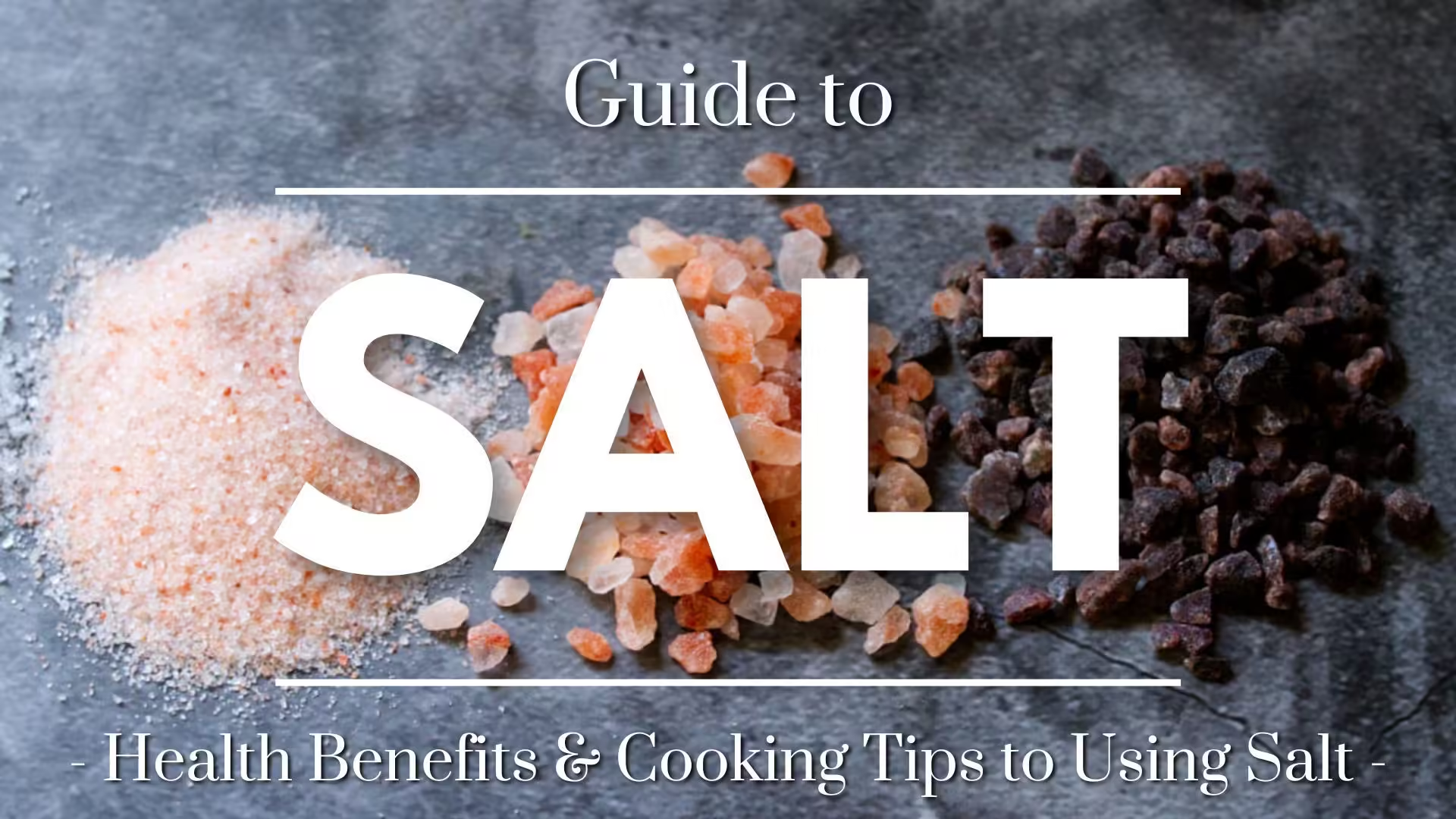
Thanks for magnificent information I was looking for this information for my mission.